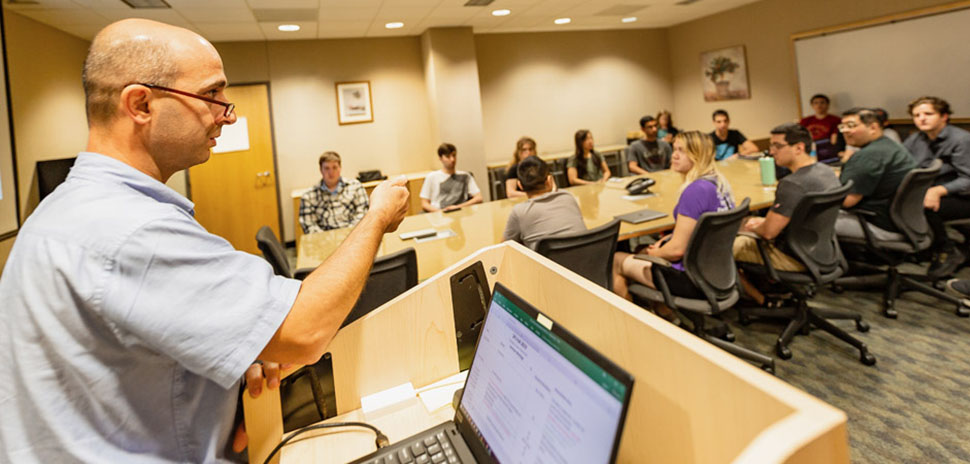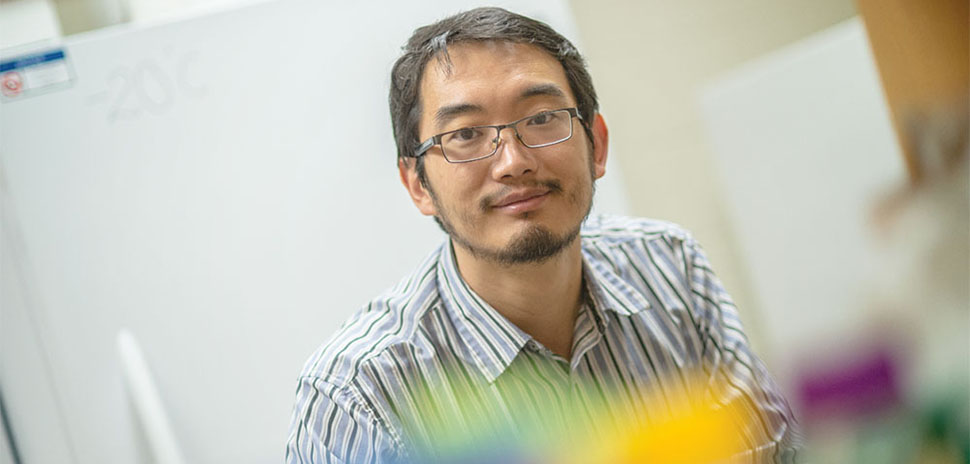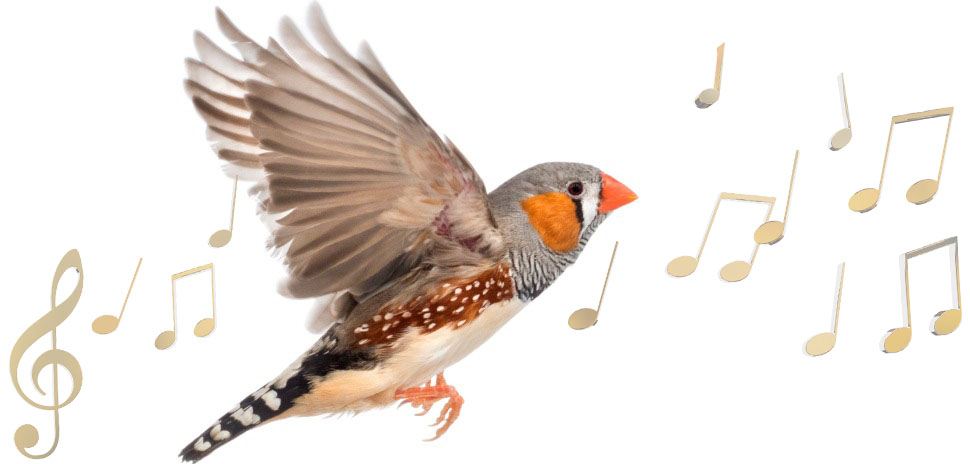![]() Every week, we do a little research of our own. We’re looking for scientists, professors, engineers, entrepreneurs—anybody, really—engaging in research and development across North Texas.
Every week, we do a little research of our own. We’re looking for scientists, professors, engineers, entrepreneurs—anybody, really—engaging in research and development across North Texas.
There’s plenty of good work being done. If you want to put R&D under your microscope, sign up for our e-newsletter.
UTSW’s songbird research studies how people learn to communicate
Verbal communication in the animal world involves sound and repetition. This allows the brain to encode memories needed to imitate parents’ speech like when a baby learns to say “mommy” or “daddy.”
How does that work, and can scientists intervene when something goes wrong?
READ NEXT: Discovery: UTD Research Finds a Cool Twist; UNT Prof Works to Improve Knee Surgery Outcomes
Scientists at UT Southwestern Medical Center are starting to find answers in a new songbird study showing memories can be implanted in the brain to teach vocalizations without any parental lessons. The research could provide clues about where in the human brain we should look to better comprehend autism and other conditions that impact language.
“This is the first time we have confirmed brain regions that encode behavioral-goal memories—those memories that guide us when we want to imitate anything from speech to learning the piano,” Dr. Todd Roberts, a neuroscientist with UTSW’s O’Donnell Brain Institute, said in a statement. “The findings enabled us to implant these memories into the birds and guide the learning of their song.”
According to the study published in Science, the scientists activated a circuit of neurons through optogenetics, a tool that uses light to monitor and control brain activity.

Dr. Kamil Sarac, professor of computer science and director of Cyber Security education programs at UT Dallas, meets weekly with graduate students benefiting from the CyberCorps: Scholarship for Service program. [Photo: Courtesy UT Dallas]
UT Dallas is using $4M NSF grant to train new cybersecurity professionals
The University of Texas at Dallas’ Erik Jonsson School of Engineering and Computer Science has received a $4 million grant from the National Science Foundation to support roughly 24 students with scholarships toward advanced degrees.
In exchange, the students will work for federal, state, or local government agencies after graduation as part of the NSF’s effort to recruit and train cybersecurity professionals through a program called CyberCorps: Scholarship for Service.
Under the grant, it will develop new courses to address increased cybersecurity threats from cloud computing and mobile devices, according to a statement. The new courses include next-gen network security and trustworthy machine learning involving the use of algorithms and statistical models that allow computers to recognize patterns needed to perform tasks.
Bhavani Thuraisingham, the Founders Chair in Engineering and Computer Science and executive director of UT Dallas’ Cyber Security Research and Education Institute, is a co-principal investigator on the grant, according to a statement.
“We have not only educated our graduate students through this program, but it has also enabled us to actively participate in and chair events for Women in Cybersecurity and Women in Data Science,” Thuraisingham said in a statement.

Sen Xu of the University of Texas at Arlington [Photo: Courtesy UT Arlington]
UTA scientist uses tiny ‘water fleas’ for insights on human infertility
A researcher at the University of Texas at Arlington is studying creatures called water fleas to investigate the basic biological processes that lead to fertility problems in humans.
To aid in his research, Sen Xu, an assistant professor of biology at UTA, has received a five-year, $1.89 million grant from the National Institutes of Health to utilize genomic approaches in order to understand the genetic mechanisms of parthenogenesis, which is a form of asexual reproduction. That’s where the freshwater microcrustacean known as Daphnia—commonly known as water fleas—come into play.
“Genetically speaking, all humans are 50% of our dad and 50% of our mom,” Xu said. “That’s because meiosis packs only half of our DNA into a sperm or egg. Due to the importance of healthy sperm and egg to produce a viable embryo, any disruption of normal meiosis can create huge problems for human reproductive health.”
But, Xu’s study focuses on the one in every 1,000 animal species that can reproduce without mating through asexual reproduction—such as the water fleas.
“Some parthenogenetic female animals reproduce asexually by modifying their otherwise normal meiosis to put 100% of their DNA in their egg, so it does not need fertilization to develop into a healthy baby,” Xu said. “Understanding the genetic mechanisms leading to this kind of aberrant meiosis can contribute to our understanding of the process and have implications for treating infertility in humans.”
The small relative of shrimp and lobsters was chosen because most water fleas are capable of both sexual and asexual reproduction, while some are only capable of the latter.
Xu is using genome sequencing and gene editing to help bring out specific genes to study their function in water fleas’ reproduction. The goal is to understand the mechanisms and genes that make these animals sense the environment and switch between normal and aberrant meiosis. Xu also wants to identify the mechanisms that make some populations of water fleas abandon sexual reproduction entirely in favor of asexual reproduction, according to a statement.
![]()
Get on the list.
Dallas Innovates, every day.
Sign up to keep your eye on what’s new and next in Dallas-Fort Worth, every day.





































































